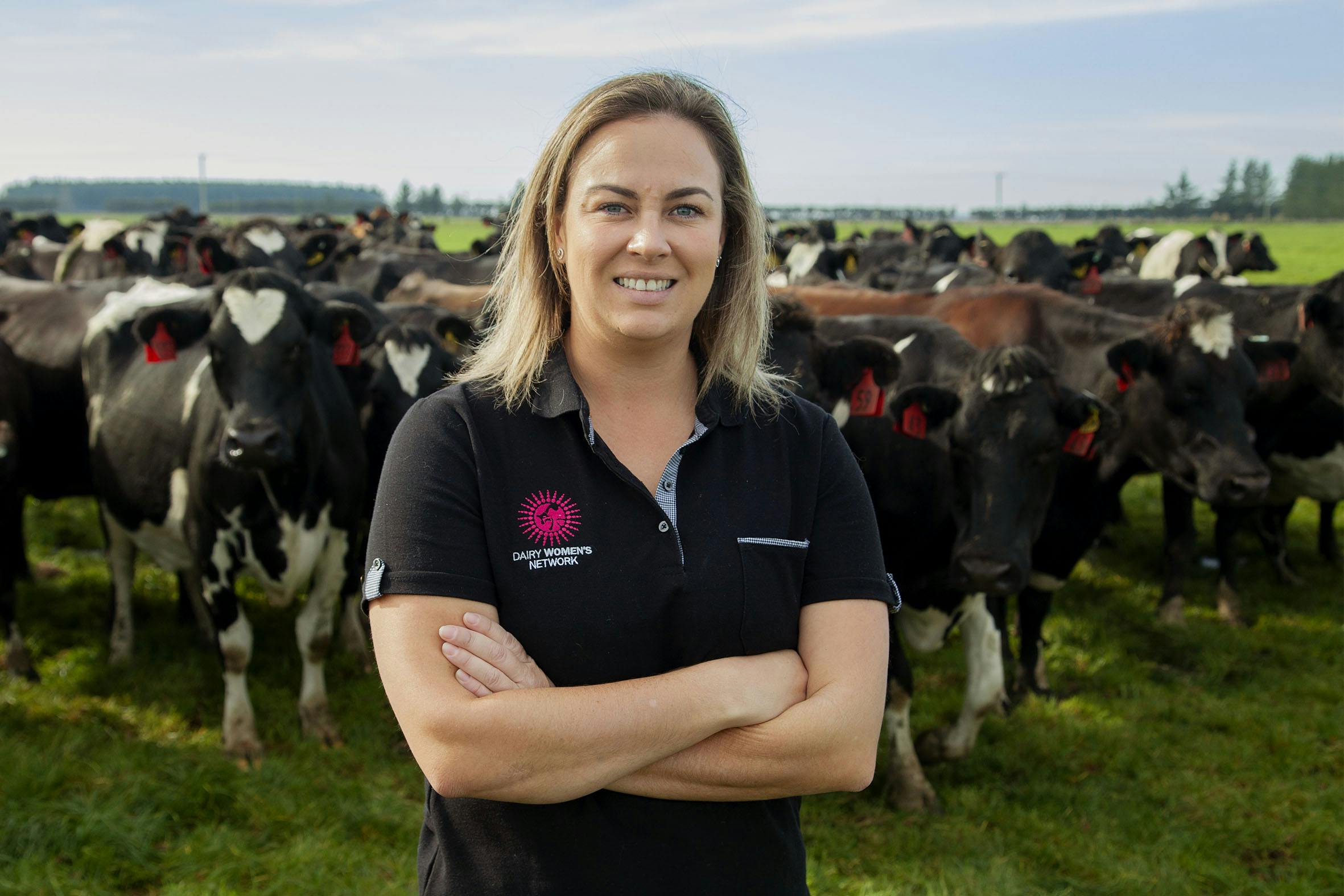Industry
Top 5 KPIs: Ash-Leigh Campbell

“One of the key players, and part of us getting those metrics, is inputting data weekly into Trev - so that’s our accountability input tool that we use weekly and share with the team.”
- Ash-Leigh Campbell, Partners in Cream
Ash-Leigh Campbell, the 2020 Fonterra Dairy Woman of the Year, has shared with us the top five Key Performance Indicators (KPIs) that she monitors, records and reports on every week as a Sharemilker at Partners in Cream.

1. Cows in vat (no. of cows)
Tracking “cows in vat” as a KPI is a good way to grasp the lactation status of a herd. This is particularly useful through calving as it helps to calculate the true milk production during a time when calf milk is being removed from the vat. Tracking the number of cows also means you can easily see where you’re at with calving which is another important metric.
In the second half of the season, post mating, I look at lactation status to see how many cows are going in the vat versus how many are lactating but withholding. I want to see fewer “red” cows because more cows “in the green” obviously means more milk in the vat and signs of a healthy herd. When lactation status for multiple farms is lined up against each other, I can see when a farm has had a spike in withholding cows and be able to correlate that with SCC weekly average (see #4) to pinpoint what’s happening on each farm.
Overall this is one of my top KPIs and one of the main ways I benchmark across the farms. It helps to create a roadmap for the rest of the farm performance by giving me the home base data that I check other metrics against to determine whether a farm is heading in the right direction.
2. Death rate (% cows wintered)
This is a relatively new metric that’s been introduced this season and it affects multiple areas of the business. On a broader level, less cow wastage means more culling opportunities come autumn, and enables deeper conversations around herd health if that metric is higher for one farm than for others.
Cow wastage comes at a cost and can also have ongoing implications for pasture management, so tracking cow wastage trends throughout the season enables the right calculations and purchases to be made to meet correct stocking rates.
3. Per cow production (kgMS/cow)
It’s every farmer’s go-to question of their neighbouring farmer or farming friend: “What’s your per cow production at the moment?”
Measuring milksolids production is highly important for internal benchmarking to identify outliers and make adjustments, especially in spring when tracking upwards. Because there are only a certain number of days per year for peak milk it’s critical to get per cow production as high as possible as quickly as possible, then hold it for the remainder of the season. At the end of the day if the cows aren’t making milk, you’re potentially not converting dry matter or leveraging assets, and ultimately not making money.
4. SCC weekly average (cells/mL)
SCC is the quickest way to identify herd health and shed hygiene. Tracking SCC on a weekly basis means that I can easily identify spikes or outliers in the data, or use the figures to explain results behind “cows in vat” (see #1). If there’s a farm that is completely against the trend I’m able to start a conversation with the relevant farm manager and work with them to figure out what’s going on, whether they need additional help or if they have already sorted the issue.
5. Growth rate (kgDM/ha/day)
The weekly growth rate of pasture is an extremely important metric to track. Getting the correct growth rate information enables us to make decisions on-farm, such as whether to shorten or extend round length, when to remove pasture from the rotation to be cut for silage, and when to remove paddocks from rotation for re-grassing. This is especially important in spring when cows are needing feed to calculate whether it’ll be running tight on the number of cows being milked versus available grass, whether it’ll be a tight rotation or if there’s a need to bring in supplementary feed.